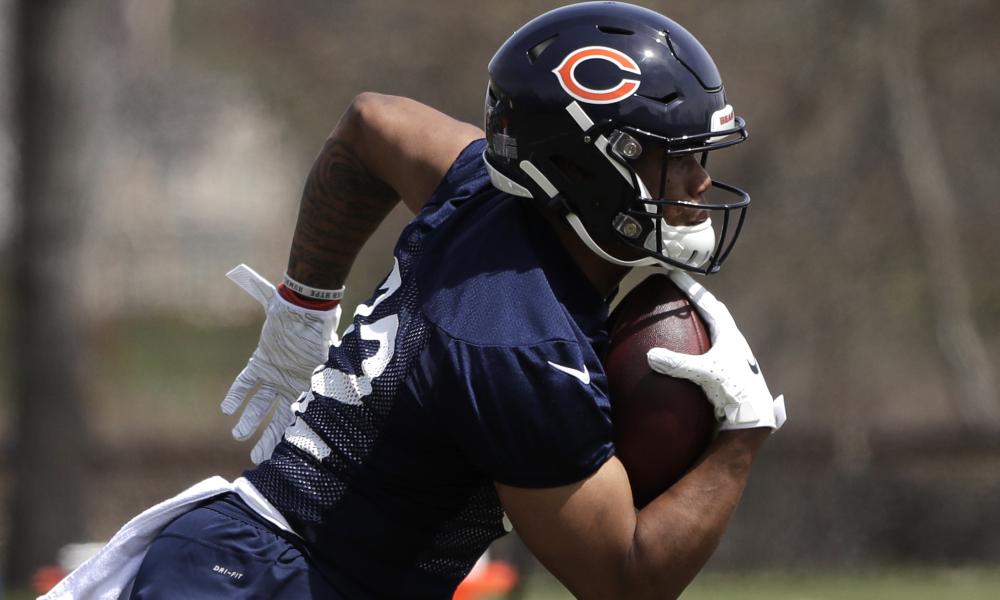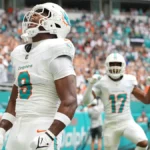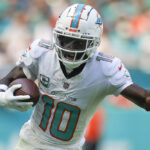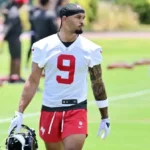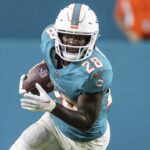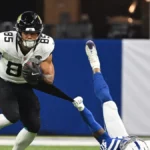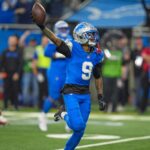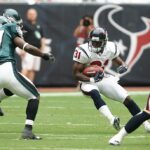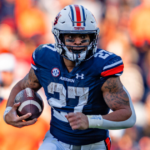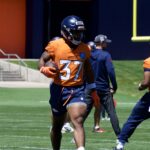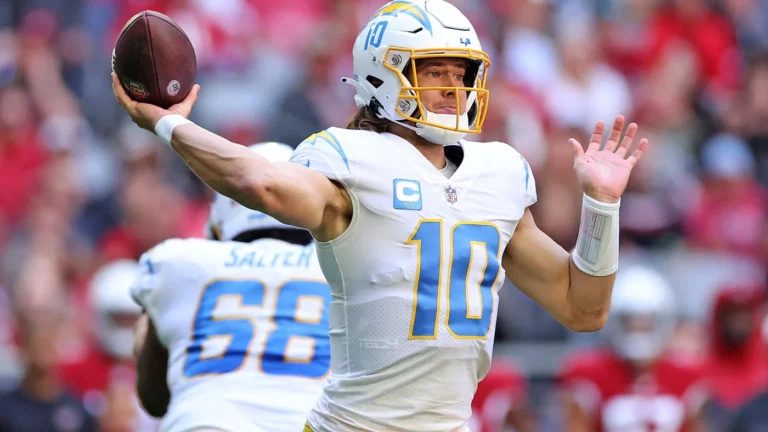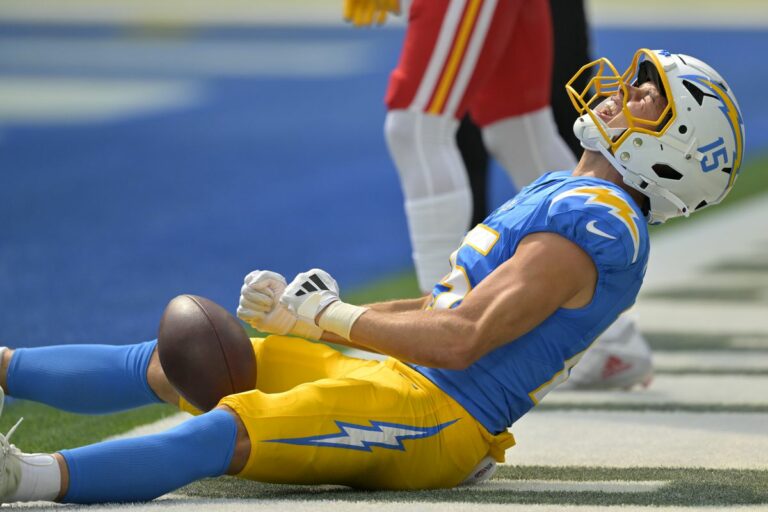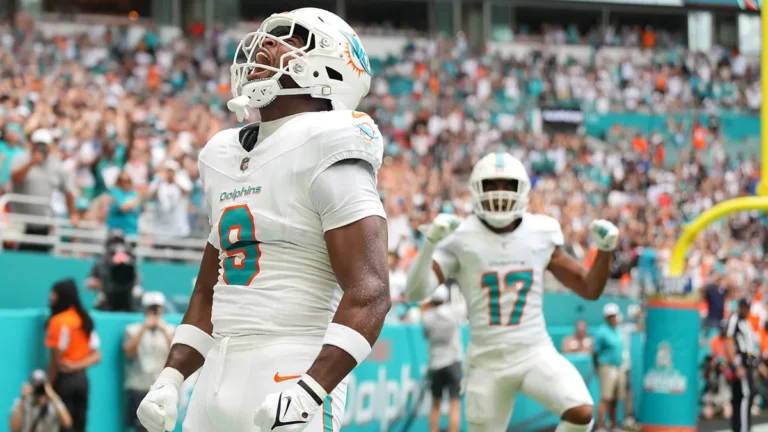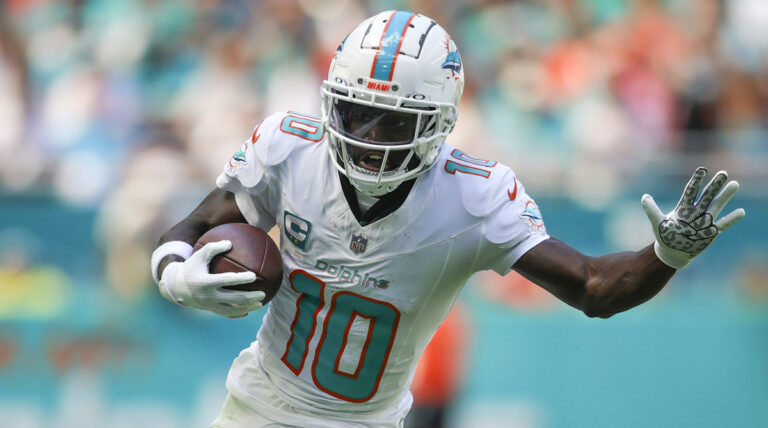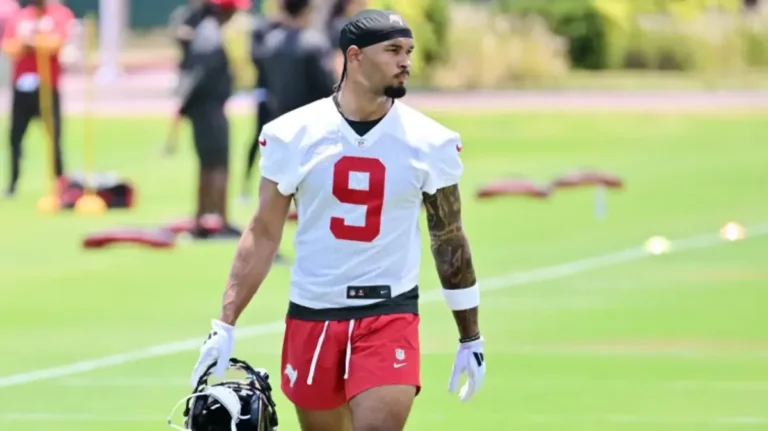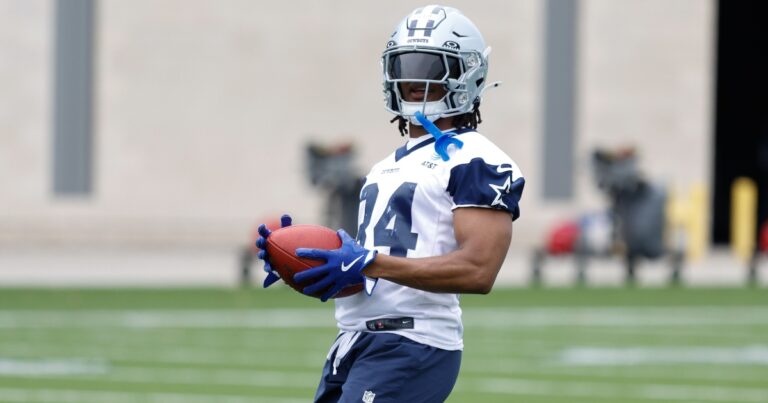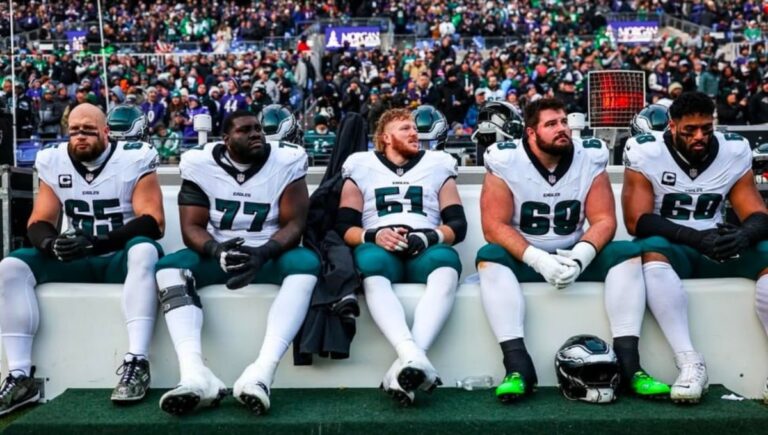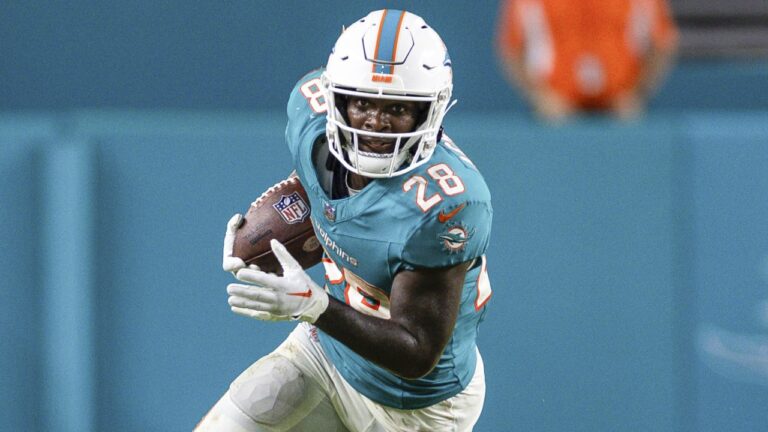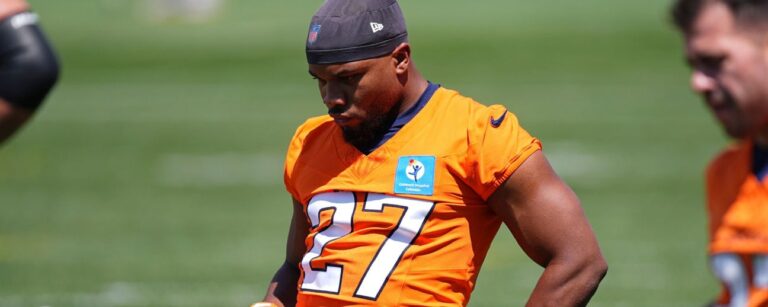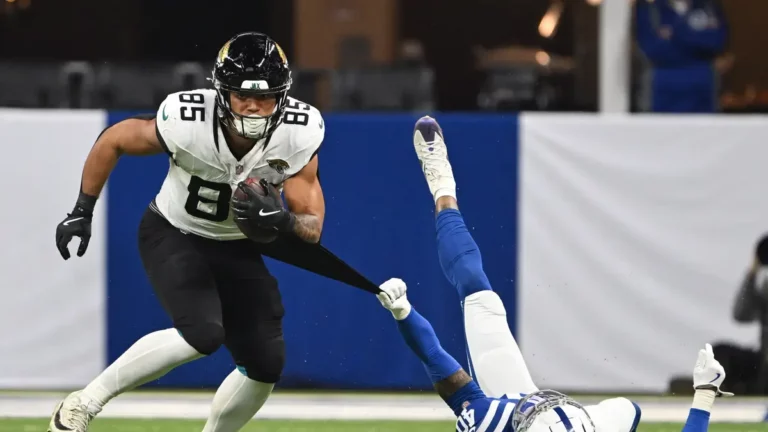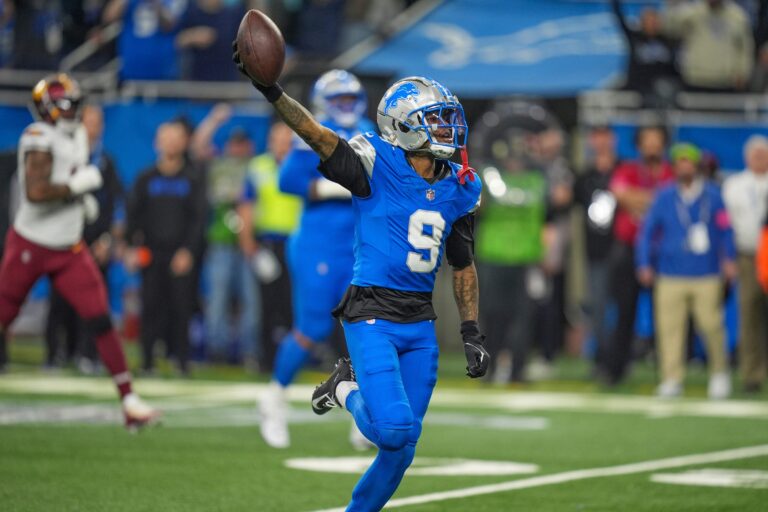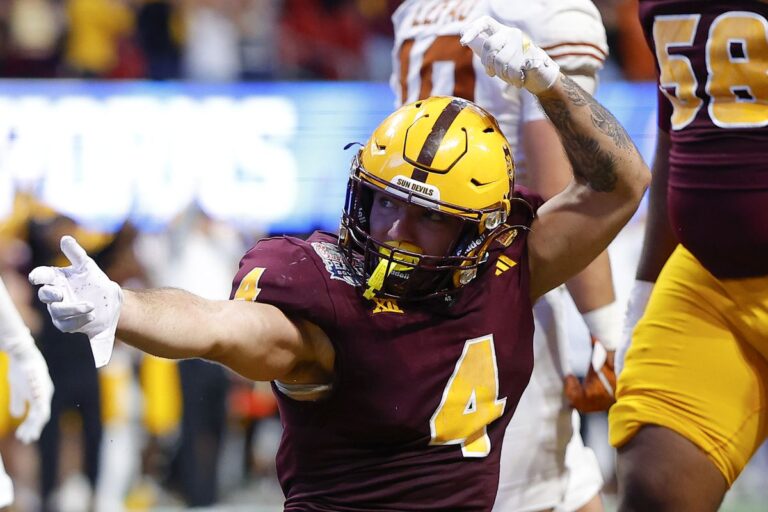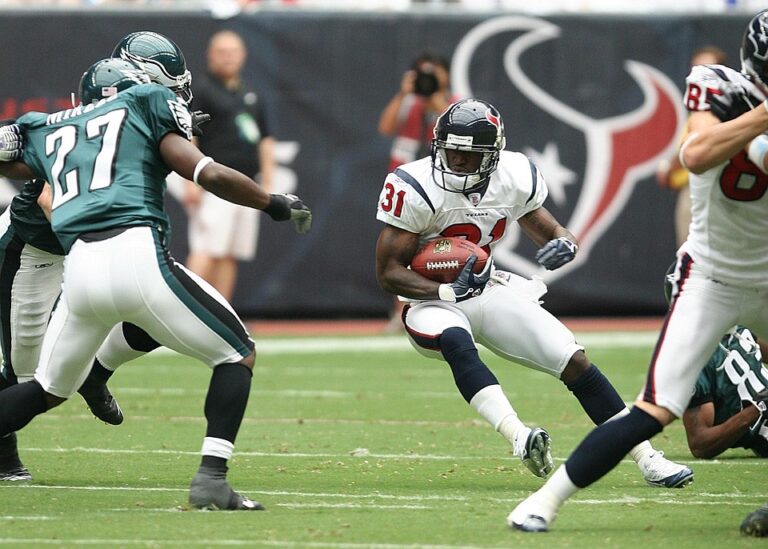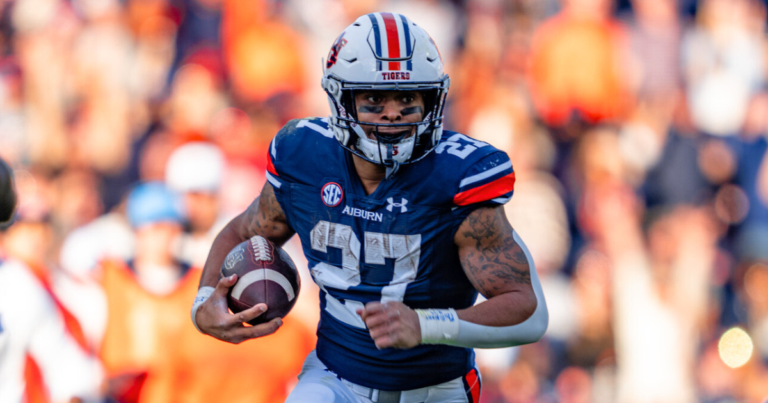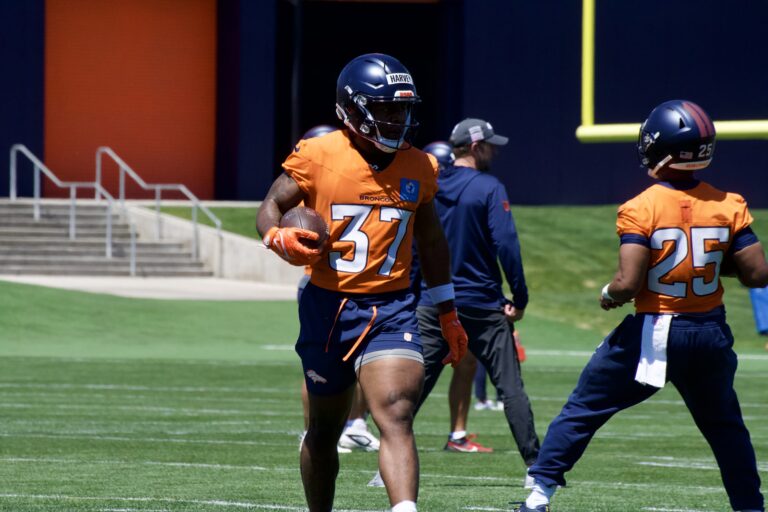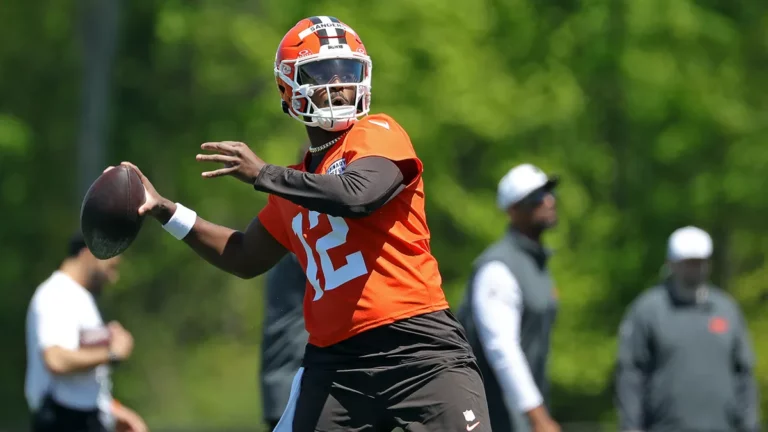Indeed, Kyler Murray and Josh Jacobs are glovelike rookie fits in Arizona and Oakland respectively. Yet, new Chicago RB David Montgomery may ultimately prove to be the true 2019 rookie fantasy jewel as Matt Nagy‘s next three-down workhorse.
“He’s the whole package,” Nagy gushed on Draft Day. “He has the hands. He’s a three-down back. He’s everything we were looking for.”
No words can trigger fantasy wood faster than “three-down back,” the most valuable commodity in the game: 20+ weekly touches. Game-flow proof. High weekly floors and even higher ceilings. Doubly as sexy when all this volume comes within a Top-10 offense in the league.
But why should we believe this is anything more than coachspeak?
Because Nagy’s offense needs a three-down back, and Montgomery checks every single box for what his coach seeks, both in the run and pass games. The upside is truly astronomical.
1) The Bears Truly Crave A Three-Down Horse
In Nagy’s versatile, up-tempo, and aggressive scheme, a back with three-down capabilities is crucial. We saw how dangerous Kareem Hunt made the Chiefs, where Nagy’s excellence as offensive coordinator launched him atop Chicago. While Nagy already uses a variety of packages and motions to create confusion, a do-it-all type of back makes his attack even more unpredictable. Bears’ director of player personnel Josh Lucas drove this point home:
“With our running back position right now, it’s extremely important when you line up on Sunday that you’re not predictable,” Lucas said. “No matter what formation you’re in with what personnel’s on the field, you never want to be predictable. So when you have a running back that doesn’t excel at running routes and creating mismatches on the perimeter in the pass game, it makes you predictable.”
While Nagy himself added: “When you have guys that can play all three downs, it’s nice for the play caller and it’s nice for the offense… there’s that balance of being a hybrid, being able to make things happen in the pass game too, to where you’re not one-dimensional.”
Yet, in the head coach’s first year, “one dimensional” defined their backfield, largely due to the limited receiving skillset of Jordan Howard. The team ran 55% of the time when Howard was on the field last season (second most), yet only 37% with Tarik Cohen in (4th lowest). Lucas wasn’t shy in addressing this issue:
“One of the main reasons we decided to move on from Jordan and bring in two backs, Davis who we signed from Seattle and Montgomery, both fit the mold of, it doesn’t matter when they’re on the field, first, second, third down. They have the flexibility and versatility to run all the plays. I think that will show and help us progress this year offensively.”
Unlike teams who openly seek committees, Nagy and the Bears truly value a three-down back. Montgomery should dominate with a 60-65% snap share, all while helping the Bears offense, which already vaulted from 28th in points to 9th last season, become even more dangerous.
2) Montgomery’s Skills as a Pass-Catcher
Of course, to be a three-down back, you must be useful in all facets of the game. Thankfully, Montgomery checks all the boxes, especially as a receiver.
In addition to his many strengths as a runner (covered below), Montgomery was scouted as as a “natural pass-catcher” with the ability to “stab away from his body.” He was also praised for a “steady base and awareness in pass protection.”
Early on in OTAs, Montgomery’s warranting the hype. He’s been bathed in praise about his skills as a pass-catcher. Nagy gushed over his route-running: “We always knew he had great hands. You don’t know with these college backs how great of route runners they are, but he’s a really good route runner.”
According to The Athletic’s Adam Jahns, Montgomery was moved all over and used on a variety of routes, including deep balls down the sidelines and seams. In fact, Montgomery “excelled in running routes and catching passes” to the point he “led the team in highlight plays” and was “a problem for the defense.”
Ultimately, Jahns noted it was “abundantly clear” that Montgomery will be “featured differently” than Jordan Howard ever allowed. This, of course, refers to his receiving role and ability to disguise offensive packages.
Yet, it’s perfectly fair to wonder about Montgomery’s true receiving upside with a perfectly capable pass-catcher in Tarik Cohen on the roster. Cohen doesn’t expect his role to change, and we don’t predict a huge dip either. Rather, we expect Cohen and Montgomery on the field often together, with Cohen split out wide and in the slot, as he was often moved around last year.
As a much more natural pass-catcher than Howard, Montgomery will make the Bears offense that much tougher to stop and less predictable. Expect 40+ receptions, even with Cohen maintaining the more traditional third-down back role.
3) Montgomery’s Skills as a Runner
Nagy prefers a very specific style of runner. He desires a combination of patience, vision, and tackle-breaking to thrive in his predominantly inside zone-running game. With a preference to pound between the guards (31%, tops in league), the runner needs to be able to make tacklers miss in a phone booth, and must have exceptional contact balance.
When Nagy lands the right style of rusher, the results have been magical. Kareem Hunt led the league in rushing and was fantasy’s RB4 as a third-round rookie, after all.
Though Montgomery may lack exceptional burst, explosion, and long-speed, his other strengths fit this scheme like a glove.
In fact, Montgomery’s most frequent pro-comparison is none other than Hunt. As runners, both backs offer exceptional contact balance, and frequently create on their own, whether making defenders miss in tight quarters or powering through tacklers (109 missed tackles, tops in NCAA). Additionally, Montgomery and Hunt offer vision and patience to let lanes develop, whether under center or out of the shotgun, which are crucial traits to succeed in Nagy’s inside-zone heavy game. Plus, both run angry, rarely going down on first contact with non-stop motors.
Nagy certainly acknowledges the similarities: “Yeah there are some similarities for sure… You look at him and the size of them and you see how they run between the tackles. They’re physical – they run angry, both of them, and I think the other connection is just the background of the coaches they both had too.
“The amount of times that Montgomery makes defenders miss inside the tackle box. He extends runs with his sheer power. He has a tremendous ability to feel when that next guy is coming, that peripheral vision.
Lou Ayeni, the shared coach Nagy references, understands both backs perhaps more than any other. He recruited and coached both Hunt and Montgomery at Toledo and Iowa State respectively, and raved about the similarities:
“The similarities between David and Kareem are their contact balance,” Ayeni said. “They can make people miss and break tackles. It’s ridiculous. In 2017, Kareem was a rookie with the Chiefs, David led college football in forced missed tackles and Kareem led the NFL in forced missed tackles.
“They both can catch the ball out of the backfield, short and down the field. They both are willing pass blockers and can protect the quarterback and they both run with a chip on their shoulders. Those guys both compete and don’t want ever want to go down. You know when you watch a running back and it’s like, ‘Whoa!’ It can be a business decision to tackle the guy. You have to gang-tackle them. Both have that desire to never let one guy bring them down.”
Even as a poor-fit last season, Howard was fed 250 carries (6th most), and Chicago ranked 8th in total rush attempts per game (28.6), illustrating the importance of the run to Nagy.
Yet, Howard was insanely inefficient in nearly every category, per PlayerProfiler, ultimately netting just 935 rushing yards (13th).
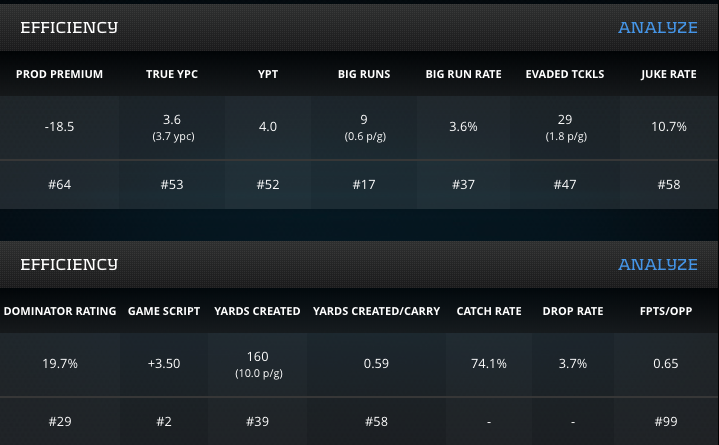
Imagine what Montgomery, who’s calling card is evading tacklers and creating his own yards, could do with similar usage. He’d easily top 1,000 yards rushing, and should double Howard’s 20 receptions for even more total yardage. With a thick, compact frame and a bell-cow collegiate track record, Montgomery should at least match this volume without difficulty.
In short, Montgomery presents the ability to weave and batter through traffic in equal measures, plus the contact balance and non-stop motor to create amidst interior mayhem. This makes him a perfect fit for Nagy’s scheme. Hunt, with a near-identical style, led the league in yardage within this system, and Montgomery could easily push for Top-Five in this category if he just duplicates Howard’s usage of last season.
Bottom Line:
Despite limited Draft Day capital, the Bears traded up to select David Montgomery, largely because he fits Nagy’s scheme like a glove both as a runner and receiver. At its most dangerous, this offense rides a three-down horse to become unpredictable, and Montgomery excels in both the run and pass games. He’s already displaying his smooth routes and soft hands in OTAs as the team’s highlight player. Plus, his elite contact balance and tackle-breaking, combined with vision and elusiveness amidst traffic, makes Montgomery the perfect “Kareem Hunt” style option for Nagy to saddle up 18-20+ times a game. Should he render Mike Davis a mere backup, Montgomery will have a clear path to Top-12 RB fantasy stats in Year One. With an ADP of RB25 and 50 overall, Montgomery’s shaping up to be a Round 5 title-winner.
